main |
sidebar

It was first erected in 1755 throughout the reign of the Qianlong Emperor. The original pavilion was made from a base of huge stone blocks which supported a wooden superstructure done in a traditional Chinese design.
In 1860, throughout the Second Opium War, the pavilion was destroyed by Anglo-French forces. It was restored in 1893 on order of the Empress Dowager Cixi. In this restoration, a new two-story superstructure was designed which incorporated elements of European architecture.
The boat design of the pavilion can relate to a quote attributed to Wei Zheng, a chancellor of the Tang Dynasty renowned for his honest advice. He is said to have told the emperor "the waters that float the boat can also swallow it", implying that the people will support the emperor but can also topple him. With this in mind, Emperor Qianlong might have chosen to construct the Marble Boat on a solid stone base to point out that the Qing Dynasty was not to be overthrown.
The Marble Boat is often seen as an ironic commentary on the actual fact that the money used to restore the Summer Palace largely came from funds originally earmarked for building up a new imperial navy. The controller of the Admiralty, Prince Chun, owed much of his social standing as well as his appointment to the Empress Dowager, who had adopted his oldest son to become the Guangxu Emperor. Because of this, he probably saw no other alternative than to condone the embezzlement.
The pavilion is 36 meters long. It stands on the northwestern shore of Kunming Lake, near the western end of the Long Corridor.

The essence of Gabo's art was the exploration of space which he believed may be done without having to depict mass. His earliest constructions such as Head No.2 were formal experiments in depicting the volume of a figure without carrying its mass. Gabo's other concern as described in the Realist Manifesto was that art required to exist actively in four dimensions including time.
Gabo's childhood years were in Munich, where he was impressed by and actively participated in the artistic, scientific, and philosophical debates of the early years of the 20th century. Because of his involvement in these intellectual debates, Gabo became a number one figure in Moscow’s avant garde, in post-Revolution Russia.
It was in Munich that Gabo attended the lectures of art historian Heinrich Wolff in and gained information of the ideas of Einstein and his fellow innovators of scientific theory, also the philosopher Henri Bergson.
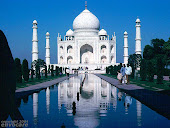
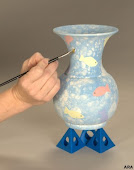


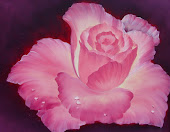
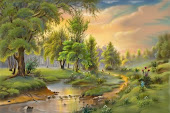


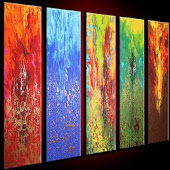

Friday, April 20, 2012

The Marble also identified as the Boat of Purity and Ease is a lakeside pavilion on the grounds of the Summer Palace in Beijing, China.
It was first erected in 1755 throughout the reign of the Qianlong Emperor. The original pavilion was made from a base of huge stone blocks which supported a wooden superstructure done in a traditional Chinese design.
In 1860, throughout the Second Opium War, the pavilion was destroyed by Anglo-French forces. It was restored in 1893 on order of the Empress Dowager Cixi. In this restoration, a new two-story superstructure was designed which incorporated elements of European architecture.
Like its predecessor, the new superstructure is made out of wood but it was absolutely painted to imitate marble. On each "deck", there is a large mirror to reflect the waters of the lake and give an impression of total immersion in the aquatic surroundings. Imitation paddlewheels on every side of the pavilion makes it look like a paddle steamer. The pavilion has a sophisticated drainage system which channels rain water through four hollow pillars. The water is lastly released into the lake through the mouths of four dragonheads.
The boat design of the pavilion can relate to a quote attributed to Wei Zheng, a chancellor of the Tang Dynasty renowned for his honest advice. He is said to have told the emperor "the waters that float the boat can also swallow it", implying that the people will support the emperor but can also topple him. With this in mind, Emperor Qianlong might have chosen to construct the Marble Boat on a solid stone base to point out that the Qing Dynasty was not to be overthrown.
The Marble Boat is often seen as an ironic commentary on the actual fact that the money used to restore the Summer Palace largely came from funds originally earmarked for building up a new imperial navy. The controller of the Admiralty, Prince Chun, owed much of his social standing as well as his appointment to the Empress Dowager, who had adopted his oldest son to become the Guangxu Emperor. Because of this, he probably saw no other alternative than to condone the embezzlement.
The pavilion is 36 meters long. It stands on the northwestern shore of Kunming Lake, near the western end of the Long Corridor.
Tuesday, April 10, 2012

Naum Gabo KBE, born Naum Neemia Pevsner (5 August [24 July] 1890 – 23 August 1977) was a famous Russian sculptor in the Constructivism movement and a pioneer of Kinetic Art. Gabo grew up in a Jewish family of six children in the provincial Russian town of Bryansk, where his father owned a factory.
His older brother was fellow Constructivist artist Antoine Pevsner; Gabo modified his name to avoid misunderstanding with him. Gabo was a fluent speaker and writer of German, French, and English in addition to his native Russian. His command of many languages contributed greatly to his mobility during his career. “As in thought, so in feeling, a vague communication is not any communication at all," Gabo once remarked.
Gabo’s Theory of Art:
The essence of Gabo's art was the exploration of space which he believed may be done without having to depict mass. His earliest constructions such as Head No.2 were formal experiments in depicting the volume of a figure without carrying its mass. Gabo's other concern as described in the Realist Manifesto was that art required to exist actively in four dimensions including time.
Gabo's childhood years were in Munich, where he was impressed by and actively participated in the artistic, scientific, and philosophical debates of the early years of the 20th century. Because of his involvement in these intellectual debates, Gabo became a number one figure in Moscow’s avant garde, in post-Revolution Russia.
It was in Munich that Gabo attended the lectures of art historian Heinrich Wolff in and gained information of the ideas of Einstein and his fellow innovators of scientific theory, also the philosopher Henri Bergson.
As a student of medicine, natural science and engineering, his understanding of the order present in the natural world mystically links all creation in the universe. Just before the onset of the First World War in 1914, Gabo discovered fashionable art, by reading Kandinsky’s Concerning the Spiritual in Art, which asserted the principles of abstract art.
;;
Subscribe to:
Posts (Atom)
Tajmahal Paintings

Painting Iteams

Creation of Paintings

Painting Equipments

Beautiful Rose Painting

Green Nature Painting

Canvas Painting

Pictute of Artist

Color Paintings

Online Paintings
